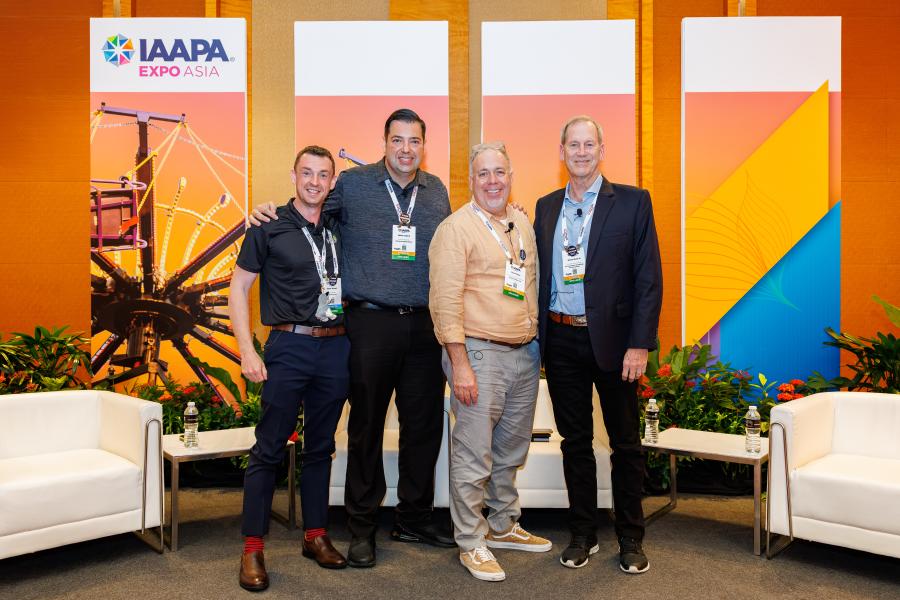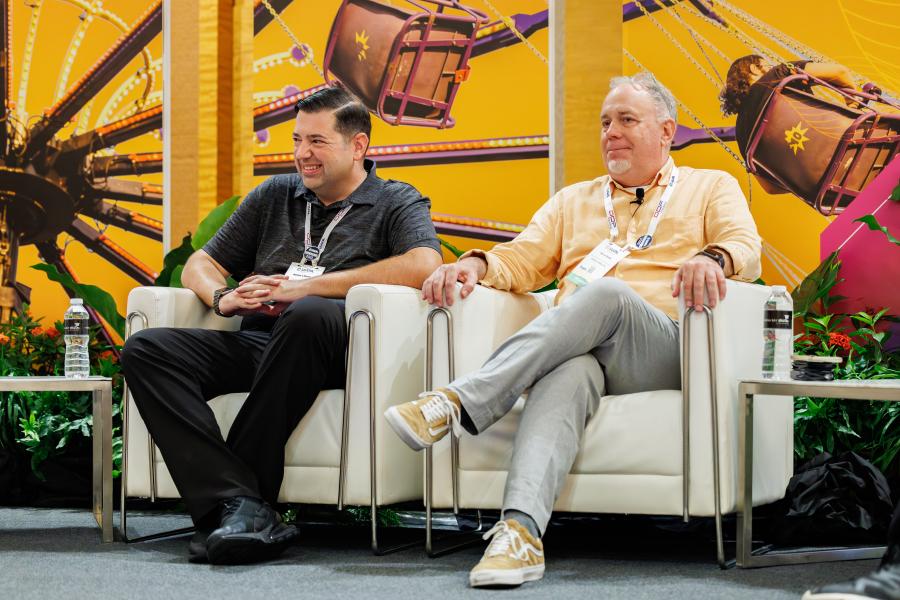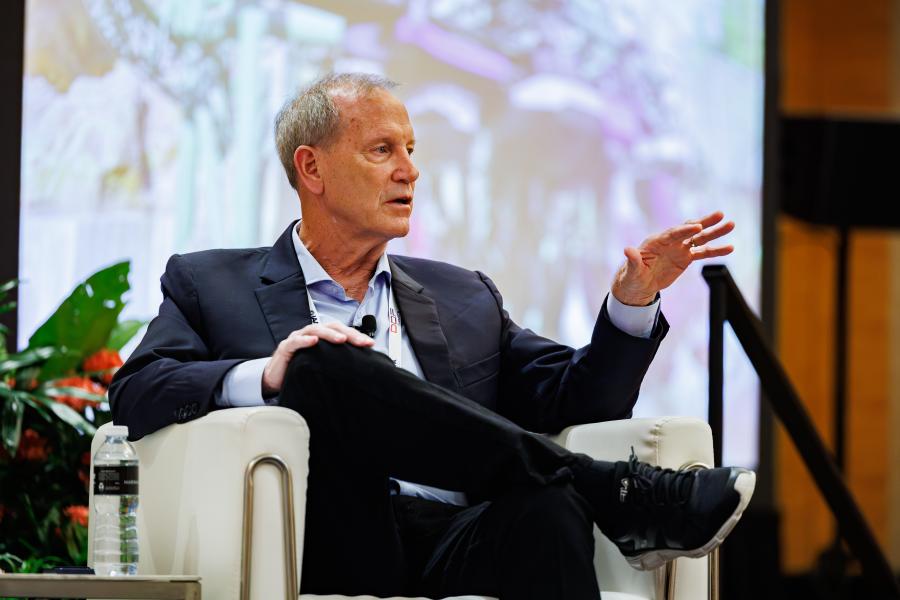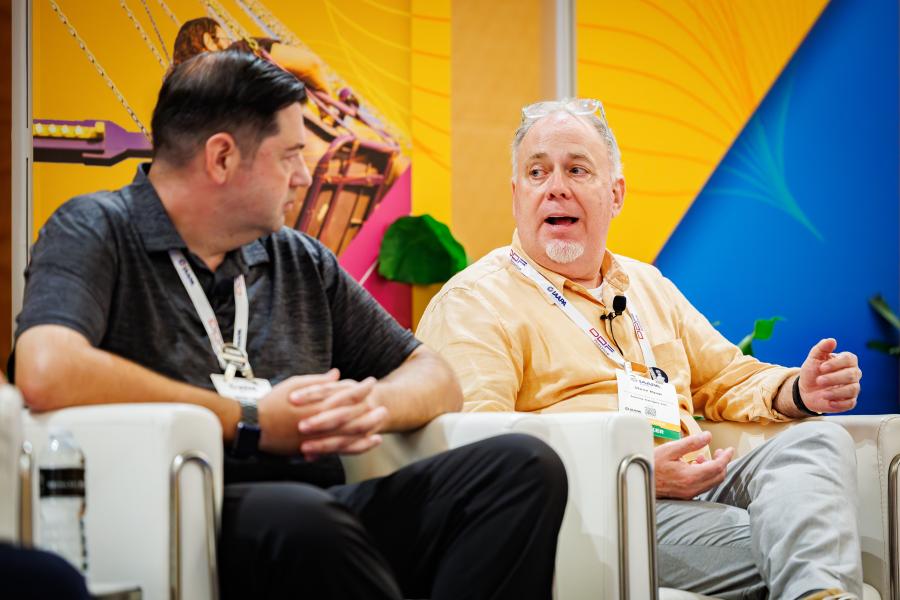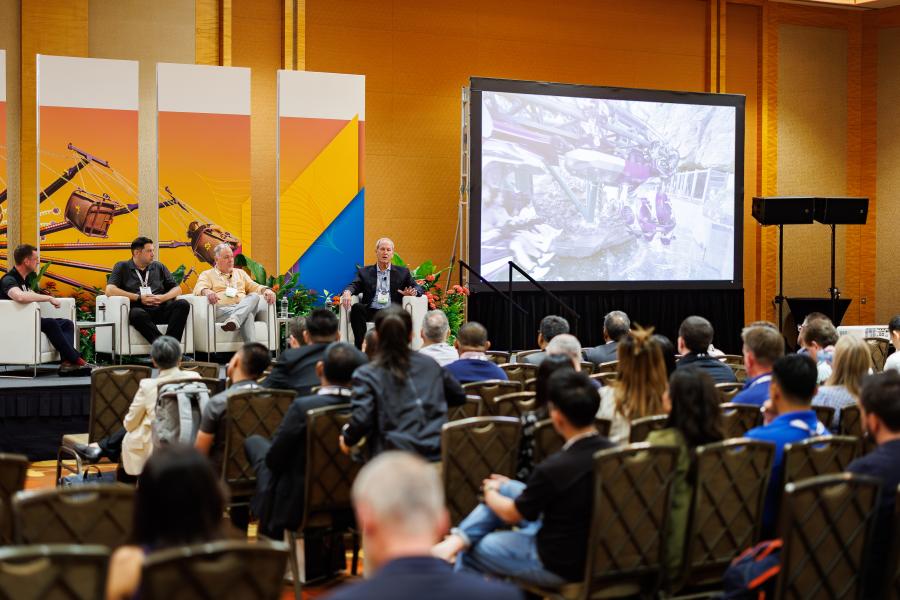When designing a new suspended coaster, the operations team at Universal Beijing Resort brainstormed how to plan for a safe and efficient evacuation of Jurassic Flyers. Asking questions, using creative thinking, and developing a strong partnership with ride manufacturer Mack Rides were at the heart of Universal Beijing Resort’s approach to safety.
If there was an event requiring an evacuation of the attraction during operation, the resort wanted to avoid driving high-reach or other large equipment through the park, unless absolutely necessary, so the guest experience would not be disrupted (or create a social media concern). In addition, even though two similar versions of Mack’s suspended dark ride/roller coaster system existed in Europe and the Middle East, Chinese regulators requested a more efficient evacuation time. Thus, using an aerial lift in certain areas was deemed to take too long.
“There was no one solution,” says Nolan Libero, the director of attractions operations at Universal Beijing Resort. “We addressed it through various engineering and technical solutions that added reliability to the ride system and allowed it to recover or move to an easier access location.”
Libero shared his vision towards safety leadership in an EDUSession at IAAPA Expo Asia 2023 in Singapore. He was joined on stage by Animax Designs Vice President for Business Development Steve Ryan, K2 Amusement Technology Technical Director Dan Kent, and HB Leisure Project Manager Steve Wood.
To support the standard operating procedures (SOP) of a ride evacuation at Jurassic Flyers, Universal Beijing Resort added additional platforms and evacuation tools, including a specialized scissor lift. The resort also built a quick-draining pond in line with the ride’s theming that was constructed to be used as an evacuation point while still maintaining the aesthetic of the ride traveling over water. The plan led to an opportunity for collaboration.
“If you don’t ask, the design team and engineers can’t find a solution,” Libero notes as a professional operator. “With our recent installation in China, we learned a lot of things about pushing the limits of what we already know. “’How do you take something that's already tried and true built and improve it?’ That was a big challenge, but it pushed me to think of solutions that I didn't think would be possible before.”
While a ride’s official documentation from a manufacturer can include chapters of information, operators need to plan for every eventuality.
“Always double check and triple check, because you're going to miss something,” advises Daniel Kent III, the CEO of K2 Amusement Technology, a consulting group with more than 70 years of combined experience developing and inspecting rides and shows. “Get a third-party in. You can never get enough input.”
He believes it’s also important to acknowledge that any challenge has multiple solutions—and that sometimes the most expensive is not necessarily the most effective.
“It's very important to ask questions and have a dialogue. The more questions you ask, the more questions you create, and from that you find solutions and work your way through them,” Libero advises.
Once solutions are established, front line staff need to be thoroughly trained. He believes safe evacuation procedures should be part of their culture.
“Make sure your team understands that timing might be important, but not at the cost of safety. Do not skip a step. I would rather go to speak to our authority partners about being five minutes late, after following all the procedures, then be short five minutes, skipping a procedure, and having an incident happen,” Libero concludes.

